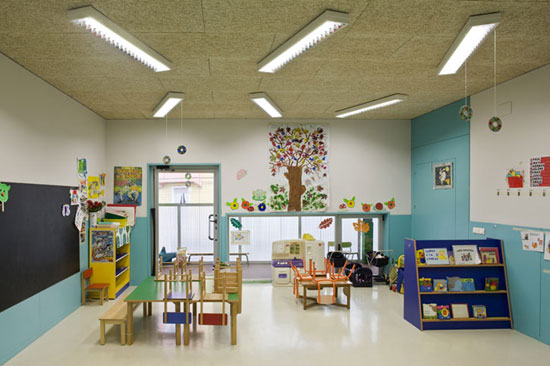Music is a multidimensional discipline, and has many layers that are conceptually similar to teaching and learning. First, music is, at its root, sound, which is physical, and can be understood as acoustics. Learning, too, is a physical thing in the social constructivist paradigm of creating knowledge through doing.
Next, music is mathematical. Sounds can be interpreted as frequencies to be calculated and manipulated by synthesizers or computers. Music composition is often spoken of in terms of intervals, or the relative distance between notes or chords like the universal blues progression I-IV-V, or the standard jazz progression I-V-IV-I. Beyond mathematics being a core subject area, we must conceptually think of the intervals and progression of teaching: scaffolding, chunking, and sequencing information for students.
Finally, music is a creative pursuit–through composition and performance, a musician demonstrates their work. This is also true of a student, who creates artifacts along the way in the process of learning: projects, written papers, tests, and other more creative representations. Often through performance of a task, or synthesis of information, they demonstrate their understanding of concepts.
Through this multidimensional and layered approach, we can understand some of the delicate work at play in both art forms.
Saturday, March 30, 2013
Friday, March 29, 2013
Music Module Project
Analyzing how musicians grab and maintain the audience's attention to create a compelling experience.
Music is Broken Colours by Marconi Union ©2012
http://www.marconiunion.com
Created for CEP 882:
The Nature and Design of Compelling Experiences.
Michigan State University - Spring 2013
Sunday, March 24, 2013
On music and teaching...
I was particularly struck by the enormity of the Italian terms for musical (and musical/emotional) concepts in this week's readings. Perhaps it is true that you can tell a lot about a culture by the way its language treats a subject—a popular misconception is that Eskimos have many words for snow.
In particular, the way that terms seemed to overlap, or describe the same feeling, tempo, or mood:
[Mosso - agitated
Allegro - moderately fast]
[Accelerando - Accelerating
Affrentado - becoming hurried]
Or terms that evoked an emotional sense:
Largo - slow and dignified.
Dolce - sweetly
Maestoso - majestic
Vivace - vivacious
These are highly nuanced terms that illustrate the point that music is highly connected to the emotional center of the brain. Tapping into this could have a positive impact on learning. Indeed, a lot of research has been conducted along these lines.
I've witnessed teachers in several subjects utilize music in the classroom for varying purposes: illustrating cultural differences, setting a mood for the learning environment, or simply to motivate students. A current Spanish teacher colleague of mine plays music from different Latin-American countries during periods when students are reading. A Humanities teacher plays different styles of music while students are working on collaborative projects (a frequent occurrence).
In particular, the way that terms seemed to overlap, or describe the same feeling, tempo, or mood:
[Mosso - agitated
Allegro - moderately fast]
[Accelerando - Accelerating
Affrentado - becoming hurried]
Or terms that evoked an emotional sense:
Largo - slow and dignified.
Dolce - sweetly
Maestoso - majestic
Vivace - vivacious
These are highly nuanced terms that illustrate the point that music is highly connected to the emotional center of the brain. Tapping into this could have a positive impact on learning. Indeed, a lot of research has been conducted along these lines.
I've witnessed teachers in several subjects utilize music in the classroom for varying purposes: illustrating cultural differences, setting a mood for the learning environment, or simply to motivate students. A current Spanish teacher colleague of mine plays music from different Latin-American countries during periods when students are reading. A Humanities teacher plays different styles of music while students are working on collaborative projects (a frequent occurrence).
Sunday, March 17, 2013
2MM v2: Mel Gordon
WARNING NSFW: Contains drawn and photographic nude imagery.
Please view directly on YouTube, where the images are larger and clearer: http://youtu.be/sznn7f1TGyU
2 Minute Moment #2: Transformation of experience through aesthetic design.
Music bed is Godchild by Miles Davis ©1949.
Please view directly on YouTube, where the images are larger and clearer: http://youtu.be/sznn7f1TGyU
2 Minute Moment #2: Transformation of experience through aesthetic design.
Music bed is Godchild by Miles Davis ©1949.
Wednesday, March 6, 2013
On interior design and teaching...
 |
| Image from http://www.nhit-shis.org/ |
Most of the reading I have done on the subject suggests using vibrant colours—though in what combinations, patterns, or motifs the suggest. All authors suggest the use of ample wall decorations, through some suggest arranging them linearly to suggest order, and others suggest non-linear, maybe random arrangements.
Another element of interior design in classrooms is found in the way lower elementary classrooms are designed. Often, they are organized into activity zones: reading, math, computer table, open play space, mailboxes, blocks or other toys, etc. This usually gives way to more flexible work areas around grade 3 or 4.
Sunday, March 3, 2013
Subscribe to:
Posts (Atom)

/Faculty%20Pages/Vince%20Mottern,%204,5,7,8%20Music%20Education,%20Chorus/___zumuhead.html_files/music-clipart4.jpg)